Yes, hamsters can eat pumpkins in moderation. Ensure they are fresh, free from pesticides, and washed before serving. Remove seeds and tough skin, cut into small pieces, and introduce gradually. Monitor for allergies or digestive issues. Pumpkins provide vitamins A and C, fiber, and hydration for hamsters. Offer as a treat, not a primary food source, and maintain a balanced diet with pellets and fresh vegetables. Consult a veterinarian for specific dietary concerns.
Hamsters are omnivores, and their diet should include a mix of fruits, vegetables, and grains. Pumpkin, being a nutrient-rich vegetable, can be a healthy addition to their menu when offered in moderation.
Hamsters and Pumpkin Compatibility
Hamsters and pumpkin can be compatible, as pumpkin is safe for hamsters to eat. However, it’s essential to introduce new foods gradually into a hamster’s diet to ensure they tolerate it well.
Some hamsters may have preferences or sensitivities, so observing their reaction to pumpkin is important. If a hamster shows positive interest and doesn’t exhibit any adverse effects, it can be compatible with their diet.
Is Pumpkin Safe for Hamsters?
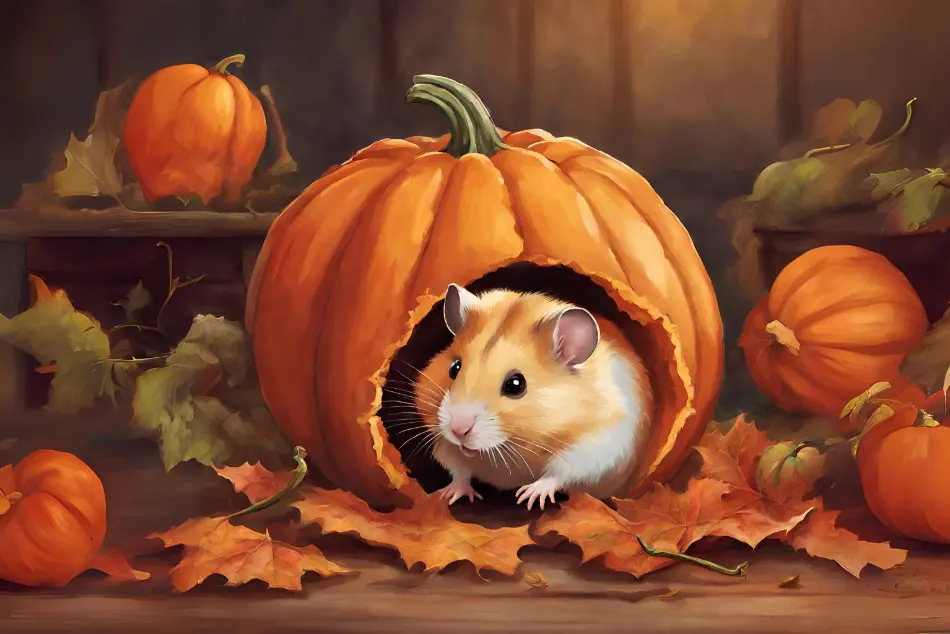
Yes, pumpkin is safe for hamsters. It provides a source of vitamins and minerals that can contribute to their overall nutrition. However, moderation is key. Feeding hamsters excessive amounts of pumpkin can lead to digestive issues. Always ensure that the pumpkin is fresh, and free from additives or seasonings that could be harmful to hamsters.
Pumpkin provides hamsters with essential nutrients, including vitamin A, which supports vision and immune function, and vitamin B, crucial for overall well-being.
The fiber content aids in digestion, preventing constipation. Pumpkin contains minerals like potassium, contributing to proper hydration and muscle function in hamsters.
However, there are important considerations and potential risks associated with feeding pumpkin to hamsters:
Nutritional Information (Per 50 grams) of Raw Pumpkin:
- Water: 45.8 grams
- Carbohydrates: 3.25 grams
- Fat: 0.05 grams
- Protein: 0.5 grams
- Fiber: 0.25 grams
- Calcium: 10.5 milligrams
- Phosphorus: 22 milligrams
- Potassium: 170 milligrams
Nutritional Information (Per 50 grams) of Cooked, Drained Pumpkin (without salt):
- Water: 3.5 grams
- Carbohydrates: 2.45 grams
- Fat: 0.035 grams
- Protein: 0.36 grams
- Fiber: 0.55 grams
- Calcium: 7.5 milligrams
- Phosphorus: 15 milligrams
- Potassium: 115 milligrams
Hamsters Pumpkins Nutritional Risks
- Water Content: While pumpkins are high in water, excessive consumption can lead to digestive problems, particularly diarrhea. Diarrhea in hamsters is a serious condition because it can cause the rapid loss of electrolytes.
- Carbohydrates: Pumpkins contain sugars, and excess forms of certain sugars may be associated with health issues, including mortality in hamsters. Moderation is crucial when feeding pumpkin.
How to Prepare Pumpkin
- Wash the pumpkin thoroughly to remove any pesticide residue.
- Ensure the pumpkin is at room temperature before serving.
- Cut the pumpkin into small pieces, removing the stem.
- Offer it using tongs or place the pieces in their food dish or cage.
- Discard any uneaten fresh food after 4-6 hours.
Putting Pumpkin in the Cage
- While it’s possible to put a pumpkin in the hamster’s cage, someone must remove it before it spoils. Someone should not leave it in the cage for over 4 hours.
- Hamsters are natural hoarders, so check their favorite hiding spots for stored food, including pumpkin, and remove any uneaten portions promptly.
Where Can I Get Pumpkin for My Hamster?
Pumpkins are readily available in supermarkets for a large part of the year. When feeding pumpkin to your hamster, follow these steps:
- Carve into Small Pieces: Carve the pumpkin flesh into small, bite-sized pieces suitable for your hamster.
- Seeds Mix: Pumpkin seeds can be included in seed mixes available in pet stores. Consider products like Mr Johnson’s Mixed Seed Niblets or Hatton Hill Organic Seeds Mix, which contain nutritious sunflower and pumpkin seeds.
Other Treat Options:
If your hamster enjoys pumpkin, you can explore other treats to add variety to their diet:
- Nuts for Hamsters: If they like pumpkin seeds, see if they enjoy nuts for hamsters as well.
- Bananas: For hamsters that enjoy the softer pumpkin flesh, bananas can be another treat option.
- Explore This topic: Can Hamsters Eat Bananas
Can Hamsters Eat Pumpkins Seeds?
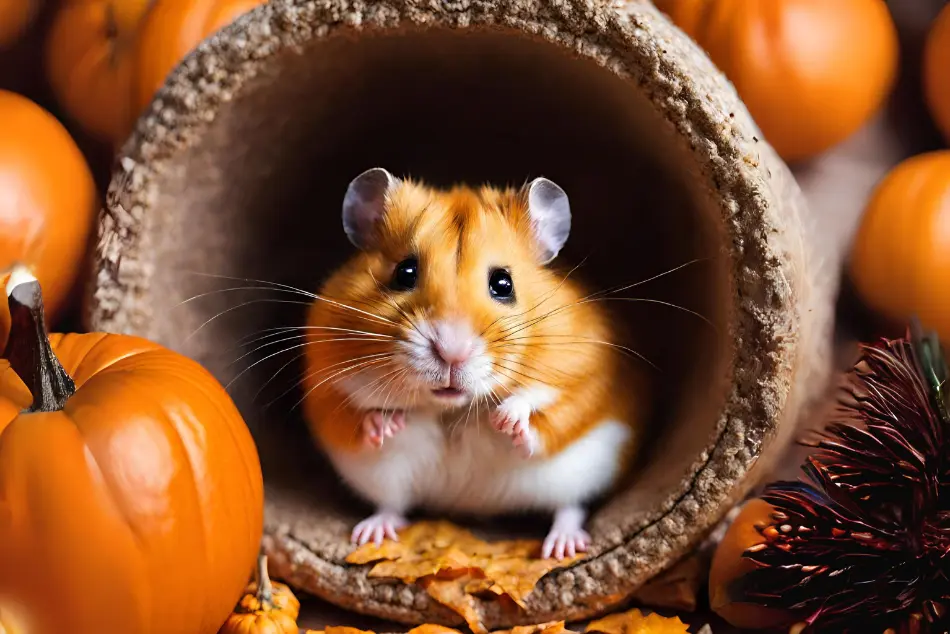
Yes, hamsters can safely consume pumpkin seeds, providing a nutrient-dense addition to their diet. Pumpkin seeds offer variety, especially for larger hamster species. Pumpkin flesh is safe for hamsters to eat.
Pumpkin seeds are often hailed as a “superfood,” rich in nutrients. While they make an excellent snack for humans, they can also be beneficial for hamsters. Here’s vet-approved information about incorporating pumpkin seeds into your hamster’s diet.
Are Pumpkin Seeds Healthy for Hamsters?
Absolutely! Pumpkin seeds are not only tasty but also highly nutritious, offering several benefits:
Key Nutritional Information of Pumpkin Seeds (Per 50 Grams):
| Nutrient | Amount (Per 50 Grams) |
| Water | 1.015 grams |
| Carbohydrates | 7.355 grams |
| Fat | 24.525 grams |
| Protein | 14.92 grams |
| Fiber | 3.25 grams |
| Calcium | 26 milligrams |
| Phosphorus | 587 milligrams |
| Potassium | 394 milligrams |
| Magnesium | 275 milligrams |
| Iron | 4.035 milligrams |
| Zinc | 3.82 milligrams |
Pumpkin seeds are rich in unsaturated “good fats” and offer dental benefits by helping grind down hamster teeth during chewing. Their fiber content contributes to a hamster’s digestive health.
Downsides of Pumpkin Seeds
While pumpkin seeds are nutritious, moderation is crucial. Overconsumption can lead to obesity, and some hamsters may develop a preference for pumpkin seeds over other foods. Therefore, it’s essential to offer them in moderation.
Serving Pumpkin Seeds to Your Hamster
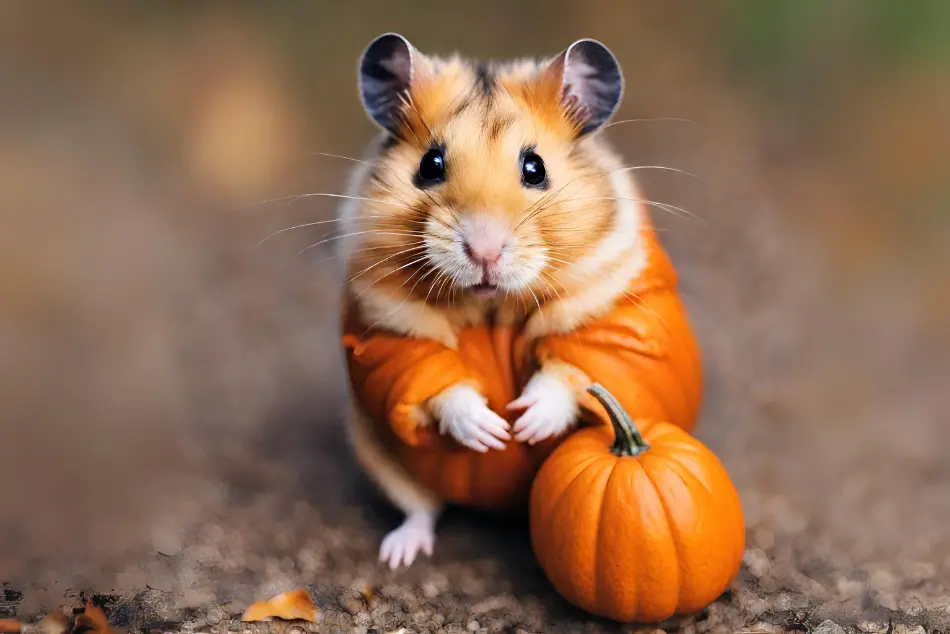
The quantity of pumpkin seeds depends on the hamster’s breed, especially for dwarf hamsters. Smaller breeds can have 1-2 seeds weekly, while larger hamsters can have 2-3 seeds. Start with a smaller amount if introducing pumpkin seeds for the first time. Both raw and unsalted baked pumpkin seeds are safe, with raw seeds preferred because of their hard shell.
Hamster owners should avoid flavored pumpkin seeds, especially those with onion or garlic spices, as they can be dangerous and even fatal for hamsters.
What Should Not Be Fed to Hamsters?
- Leaf/stems/green parts of a tomato
- Garlic, onions, leeks, shallots
- Alcohol
- Chocolate
- Apple seeds/stems
- Peach, nectarine, plum pits
- Raw beans
- Raw potatoes
- Rhubarb leaves
- Candy
- Caffeine (includes tea)
- Soda
- Processed foods intended for human consumption
This list does not include all foods, so it is important to be cautious when introducing new foods to a hamster’s diet.
How Much Pumpkin Can Hamsters Eat
Feeding your hamster pumpkin should be part of a balanced diet, and it’s crucial to provide treats like pumpkin in moderation to prevent weight gain. Considering the small size of hamsters, portion control is essential to ensure they receive a suitable amount.
Here are some guidelines:
- Portion Size: Tailor the portion size based on your hamster’s size. Syrian hamsters, being larger, can consume slightly more than their smaller dwarf or Chinese counterparts.
- Consult Your Vet: To determine the exact amount and frequency suitable for your hamster, consult your veterinarian. They can provide personalized advice based on your hamster’s individual needs.
Pumpkin Treats for Hamsters
Pumpkin can be a delightful treat for hamsters. You can offer small, bite-sized pieces of fresh pumpkin or create pumpkin-based treats. However, treats should only complement their regular diet and not exceed 10% of their overall food intake.
Here’s the list of hamster-friendly fruits and vegetables you provided, categorized for easy reference:
Leafy Greens:
- Parsley
- Cilantro
- Mint
- Asparagus
- Cabbage
- Spinach
- Red lettuce
- Bibb lettuce
- Buttercrunch lettuce
- Escarole
- Watercress
- Romaine
- Swiss chard
- Arugula
- Rocket
- Endive
Root Vegetables:
- Carrot
- Carrot tops
- Beet
- Beet tops
- Sweet potato
- Parsnip
- Potato (cooked only)
Cruciferous Vegetables:
- Broccoli
- Broccolini
- Cauliflower
Other Vegetables:
- Green beans
- Bell pepper
- Celery
- Cucumber
- Tomato
- Summer squash
- Zucchini
- Okra
- Yu choy
- Bok choy
- Sweet corn
- Baby corn
- Artichoke
- Sprouts
Herbs:
- Basil
Fruits:
- Bell pepper
- Cucumber
- Tomato
- Sweet potato
- Okra
- Watercress
It’s essential to note that while most fruits and veggies are safe for hamsters, certain foods can be toxic to them. Always double-check to ensure that any new items are safe for your pet, and introduce them gradually to observe any adverse reactions.
Pumpkin Recipes for Hamsters
Creating simple pumpkin recipes for hamsters can be a fun way to incorporate this nutritious ingredient into their diet. For example, you can mix finely grated pumpkin with their regular food or create pumpkin puree treats. However, recipes should be simple, without added sugars or ingredients that could be harmful to hamsters.
Remember, individual hamsters may have different preferences and tolerances, so it’s essential to pay attention to their reactions when introducing pumpkin or any new food into their diet.
Can Hamsters Eat Pumpkins: Symptoms, Diagnosis, and Treatment?
Symptoms:
- Gastrointestinal distress
- Abdominal pain
- Difficulty breathing
- Lethargy
- Loss of appetite
- Unusual behavior
Diagnosis:
- Observation of symptoms
- Veterinary examination
- History of unusual ingestion
Treatment:
- Immediate veterinary attention is crucial
- Diagnostic tests to assess internal damage
- Supportive care, such as fluid therapy
- Surgical intervention if necessary
- Monitoring for complications and recovery progress

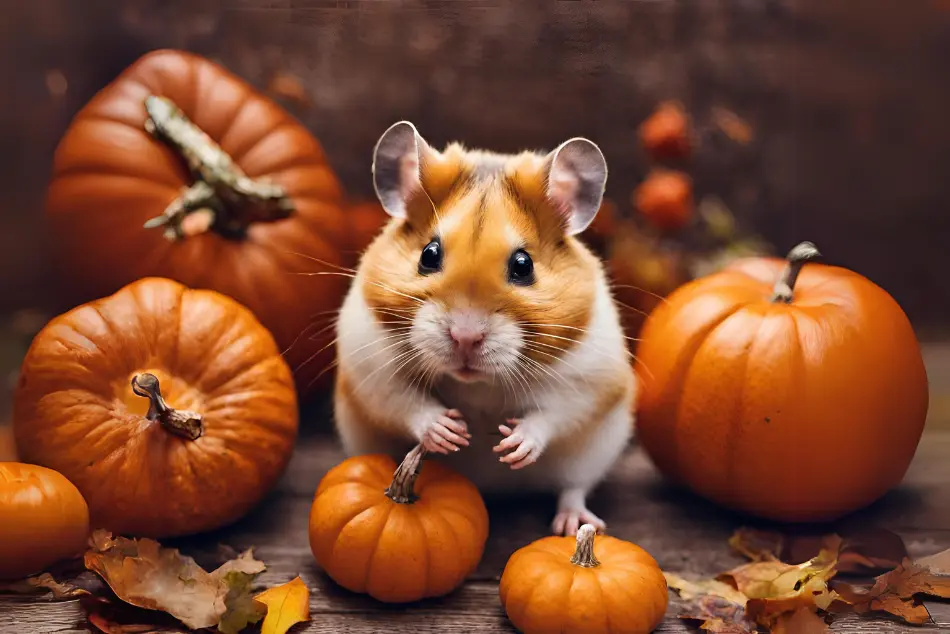
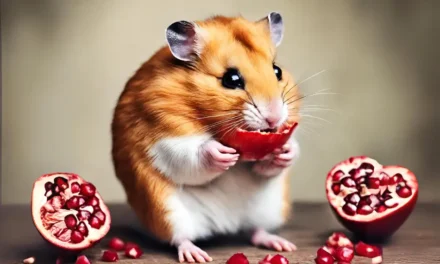
![Can Hamsters Eat Grapes [Answered By Vet Expert]](https://rodentpeteat.com/wp-content/uploads/2024/02/Can-Hamsters-Eat-Grapes-440x264.webp)
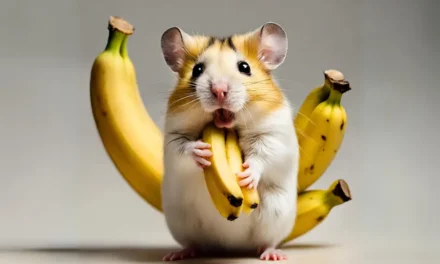
![Can Hamsters Eat Apple [Answered By Expert]](https://rodentpeteat.com/wp-content/uploads/2024/02/Can-Hamsters-Eat-Apple-440x264.webp)